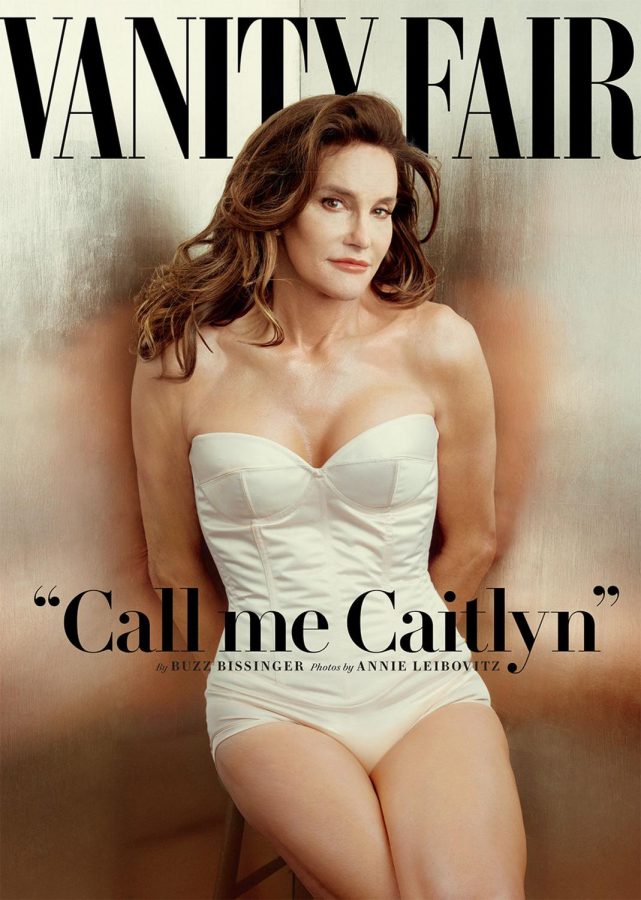Editorial: Jenner and Gender: Don’t chastise — explain and educate
June 2, 2015
It only took three words to electrify social media and news outlets with a red-hot buzz.
“Call me Caitlyn.”
Emblazoned with these three words, Vanity Fair’s July 2015 cover went viral on Monday after the magazine posted a photo of it on Twitter. The cover — featuring a dramatic shot of Caitlyn Jenner in a cream-colored bustier — unveiled her authentic identity, inside and out. Formerly known as “Bruce Jenner,” Jenner made her metamorphosis final with the bold image, evoking both praise and criticism from a fervent online community.
Online and offline, there is still confusion on how to discuss the 1976 Olympic gold medal winner. With the influx of media attention, there are seismic opportunities to misappropriate not only gender pronoun changes, but Jenner’s identity and what it means to live a trans life. As a result, some trans rights activists have admonished and scolded those responding inappropriately to Caitlyn’s debut.
As trans rights activists, though, we need to educate — not reprimand — those who err in discussing Jenner’s identity. While the Internet is ablaze with trans dialogue, we need to capitalize on this occasion to teach others about trans culture and how to discuss trans people — rather than point fingers at the politically incorrect.
On Twitter, the viral hashtags #CaitlynJenner and #CallMeCaitlyn are brimming with opportunities to educate others on trans issues.
When former Nickelodeon star Drake Bell tweeted “Sorry…still calling you Bruce,” other Twitter users attacked Bell.
One user tweeted, “For real. Has this kid done anything since his Disney show other than hit puberty? #DrakeBell.”
This tweet, among many others, is problematic because it adds misguided attention toward Bell’s mistake without correcting it.
In Bell’s apology for his tweet, he still erroneously referred to Jenner as male. “I’m not dissing him! I just don’t want to forget his legacy! He is the greatest athlete of all time! Chill out!” he tweeted.
If the tweets in response to Bell’s mistake focused on fixing what he said wrong, rather than attacking him, maybe his apology would have included the correct pronouns, proving he’d become educated on the issue. Instead, we’ve bred undue negativity into trans dialogue.
We have the ability to create meaningful discourse even in response to the most ignorant comments.
There’s a great deal to lose if we don’t react with understanding. Showing others the equitable way to approach trans issues transcends Jenner herself — it affects the whole trans community. When someone haphazardly calls Caitlyn “Bruce” and we don’t explain why that’s improper, we’re endangering other trans lives.
How can we expect our generation to be fluent in politically correct trans dialogue if we criticize rather than advise?
Trans people have never been so visible — 30 years ago a trans woman never would have made the cover of Vanity Fair. In this time of unprecedented change, we expect people to make mistakes in talking about trans people. What’s more important than calling out these errors is discussing the correct pronouns and the correct name Jenner prefers.
Jenner has already taught us so much about bravery and acceptance. Now, it’s time for us to continue her mission and have enough patience to help others through the learning process.
Rather than chastise someone for their mistake, explain and educate.



